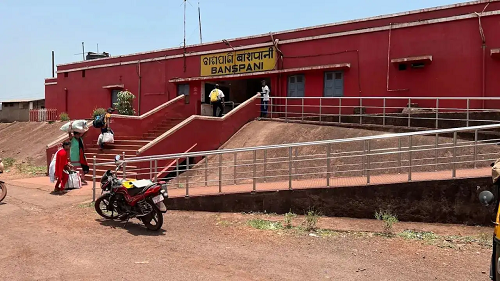In a railway network famed for its record-breaking lengths and bustling metropolitan terminals, the Banspani Railway Station (BSPX) in Odisha stands out for a very different reason: its incredibly small stature. Yet, despite being one of India’s tiniest railway stations, Banspani plays a colossal role as a lifeline for the nation’s industry.
Measuring just approximately 140 meters in length and featuring a solitary platform, Banspani is widely regarded as one of India’s smallest stations. Its infrastructure is modest, reflecting its function as a transit point rather than a major passenger hub, and it is too short to accommodate an entire standard express train.
Banspani’s importance, however, is not measured in platforms, but in tons.
Tucked away in the mineral-rich Keonjhar district, Banspani is a critical artery for the freight movement that powers industrial India. It is one of the busiest iron ore loading stations in the country, serving the vast mining belt of the Joda municipality area.
Day in and day out, massive freight trains rumble through the station, carrying significant quantities of raw iron ore to steel plants and factories across the country.
“Banspani is proof that every piece of the railway network, no matter how small, is vital,” noted a South Eastern Railway official. “The volume of freight that passes through this single platform station is immense, making it a critical choke point for the steel and mineral supply chain.”
While its primary function is industrial, Banspani also serves as a crucial link for the remote local population, connecting rural settlements in the Keonjhar district to larger towns and the national railway grid. Currently, a handful of essential passenger services, including the Barbil-Puri Express and the Brahmapur-Tatanagar Vande Bharat Express, make stops here, ensuring regional connectivity.
Banspani Railway Station is a beautiful paradox—a minimalistic marvel nestled amidst the scenic hills of Odisha, silently executing one of the most critical logistical roles in the country’s economy.







